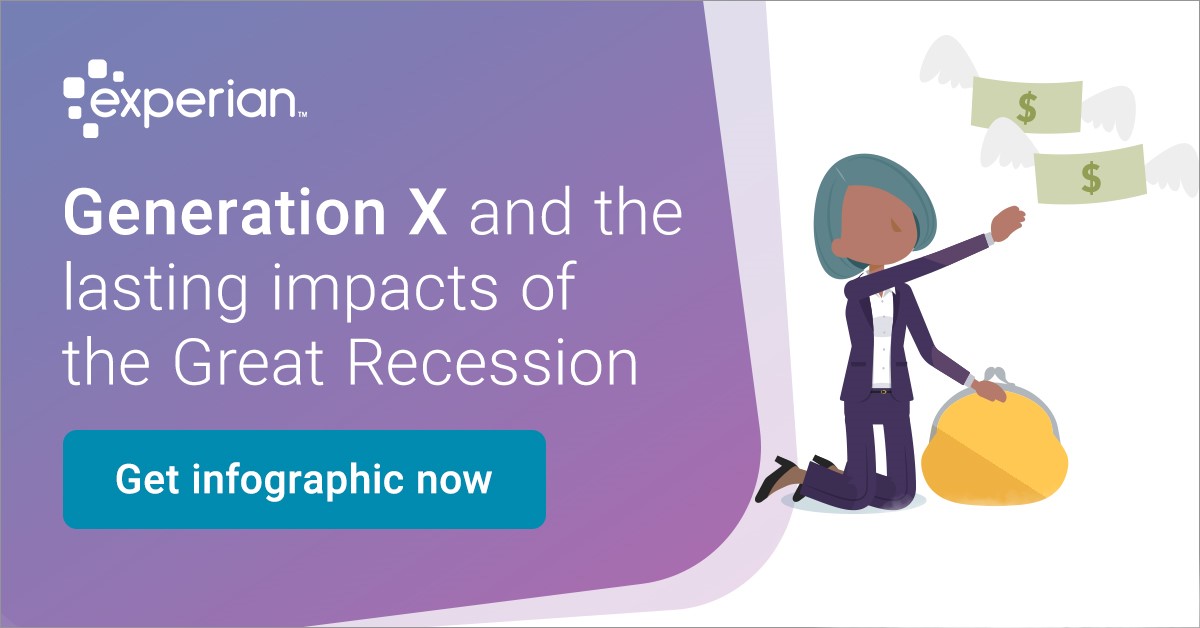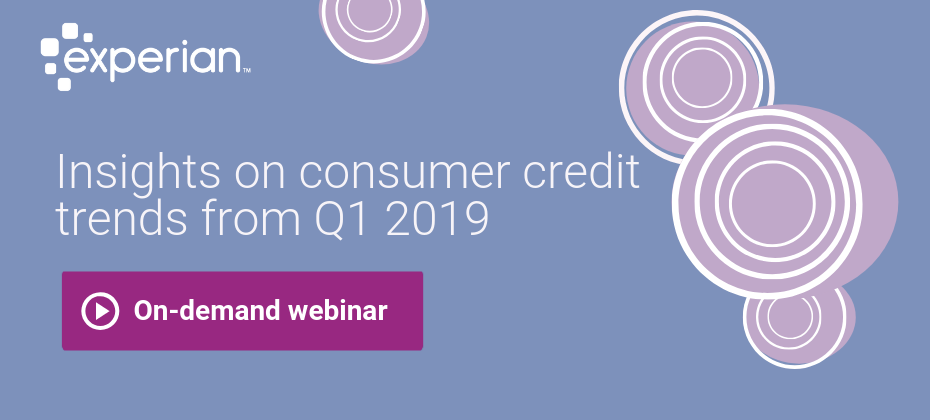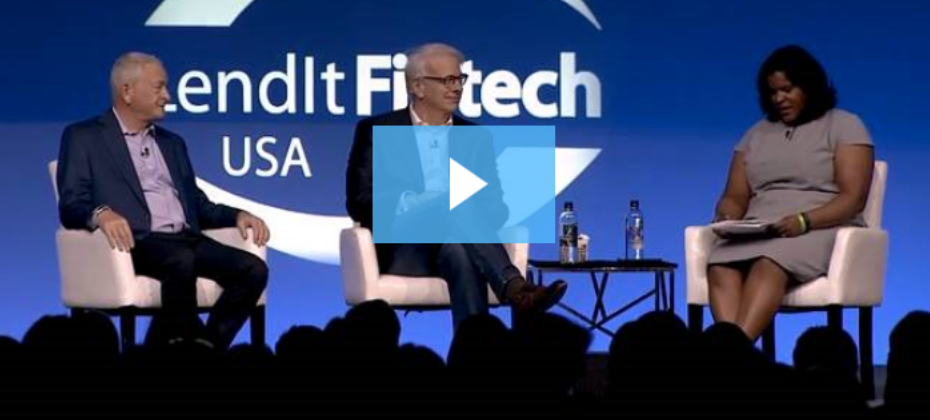Fintech
Fintech

Today is National Fintech Day – a day that recognizes the ever-important role that fintech companies play in revolutionizing the customer experience and altering the financial services landscape. Fintech. The word itself has become synonymous with constant innovation, agile technology structures and being on the cusp of the future of finance. Fintech challengers are disrupting existing financial models by leveraging data, advanced analytics and technology – both inspiring traditional financial institutions in their digital transformation strategies and giving consumers access to a variety of innovative financial products and services. But to us at Experian, National Fintech Day means more than just financial disruption. National Fintech Day represents the partnerships we have carefully fostered with our fintech clients to drive financial inclusion for millions of people around the globe and provide consumers with greater control and more opportunities to access the quality credit they deserve. “We are actively seeking out unresolved problems and creating products and technologies that will help transform the way businesses operate and consumers thrive in our society. But we know we can’t do it alone,” said Experian North American CEO, Craig Boundy in a recent blog article on Experian’s fintech partnerships. “That’s why over the last year, we have built out an entire team of account executives and other support staff that are fully dedicated to developing and supporting partnerships with leading fintech companies. We’ve made significant strides that will help us pave the way for the next generation of lending while improving the financial health of people around the world.” At Experian, we understand the challenges fintechs face – and our real-world solutions help fintech clients stay ahead of constantly changing market conditions and demands. “Experian’s pace of innovation is very impressive – we are helping both lenders and consumers by delivering technological solutions that make the lending ecosystem more efficient,” said Experian Senior Account Executive Warren Linde. “Financial technology is arguably the most important type of tech out there, it is an honor to be a part of Experian’s fintech team and help to create a better tomorrow.” If you’d like to learn more about Experian’s fintech solutions, visit us at Experian.com/Fintech.

Earlier this year, the Consumer Financial Protection Bureau (CFPB) issued a Notice of Proposed Rulemaking (NPRM) to implement the Fair Debt Collection Practices Act (FDCPA). The proposal, which will go into deliberation in September and won't be finalized until after that date at the earliest, would provide consumers with clear-cut protections against disturbance by debt collectors and straightforward options to address or dispute debts. Additionally, the NPRM would set strict limits on the number of calls debt collectors may place to reach consumers weekly, as well as clarify how collectors may communicate lawfully using technologies developed after the FDCPA’s passage in 1977. So, what does this mean for collectors? The compliance conundrum is ever present, especially in the debt collection industry. Debt collectors are expected to continuously adapt to changing regulations, forcing them to spend time, energy and resources on maintaining compliance. As the most recent onslaught of developments and proposed new rules have been pushed out to the financial community, compliance professionals are once again working to implement changes. According to the Federal Register, here are some key ways the new regulation would affect debt collection: Limited to seven calls: Debt collectors would be limited to attempting to reach out to consumers by phone about a specific debt no more than seven times per week. Ability to unsubscribe: Consumers who do not wish to be contacted via newer technologies, including voicemails, emails and text messages must be given the option to opt-out of future communications. Use of newer technologies: Newer communication technologies, such as emails and text messages, may be used in debt collection, with certain limitations to protect consumer privacy. Required disclosures: Debt collectors will be obligated to send consumers a disclosure with certain information about the debt and related consumer protections. Limited contact: Consumers will be able to limit ways debt collectors contact them, for example at a specific telephone number, while they are at work or during certain hours. Now that you know the details, how can you prepare? At Experian, we understand the importance of an effective collections strategy. Our debt collection solutions automate and moderate dialogues and negotiations between consumers and collectors, making it easier for collection agencies to reach consumers while staying compliant. Powerful locating solution: Locate past-due consumers more accurately, efficiently and effectively. TrueTraceSM adds value to each contact by increasing your right-party contact rate. Exclusive contact information: Mitigate your compliance risk with a seamless and unparalleled solution. With Phone Number IDTM, you can identify who a phone is registered to, the phone type, carrier and the activation date. If you aren’t ready for the new CFPB regulation, what are you waiting for? Learn more Note: Click here for an update on the CFPB's proposal.

The fact that the last recession started right as smartphones were introduced to the world gives some perspective into how technology has changed over the past decade. Organizations need to leverage the same technological advancements, such as artificial intelligence and machine learning, to improve their collections strategies. These advanced analytics platforms and technologies can be used to gauge customer preferences, as well as automate the collections process. When faced with higher volumes of delinquent loans, some organizations rapidly hire inexperienced staff. With new analytical advancements, organizations can reduce overhead and maintain compliance through the collections process. Additionally, advanced analytics and technology can help manage customers throughout the customer life cycle. Let’s explore further: Why use advanced analytics in collections? Collections strategies demand diverse approaches, which is where analytics-based strategies and collections models come into play. As each customer and situation differs, machine learning techniques and constraint-based optimization can open doors for your organization. By rethinking collections outreach beyond static classifications (such as the stage of account delinquency) and instead prioritizing accounts most likely to respond to each collections treatment, you can create an improved collections experience. How does collections analytics empower your customers? Customer engagement, carefully considered, perhaps comprises the most critical aspect of a collections program—especially given historical perceptions of the collections process. Experian recently analyzed the impact of traditional collections methods and found that three percent of card portfolios closed their accounts after paying their balances in full. And 75 percent of those closures occurred shortly after the account became current. Under traditional methods, a bank may collect outstanding debt but will probably miss out on long-term customer loyalty and future revenue opportunities. Only effective technology, modeling and analytics can move us from a linear collections approach towards a more customer-focused treatment while controlling costs and meeting other business objectives. Advanced analytics and machine learning represent the most important advances in collections. Furthermore, powerful digital innovations such as better criteria for customer segmentation and more effective contact strategies can transform collections operations, while improving performance and raising customer service standards at a lower cost. Empowering consumers in a digital, safe and consumer-centric environment affects the complete collections agenda—beginning with prevention and management of bad debt and extending through internal and external account resolution. When should I get started? It’s never too early to assess and modernize technology within collections—as well as customer engagement strategies—to produce an efficient, innovative game plan. Smarter decisions lead to higher recovery rates, automation and self-service tools reduce costs and a more comprehensive customer view enhances relationships. An investment today can minimize the negative impacts of the delinquency challenges posed by a potential recession. Collections transformation has already begun, with organizations assembling data and developing algorithms to improve their existing collections processes. In advance of the next recession, two options present themselves: to scramble in a reactive manner or approach collections proactively. Which do you choose? Get started

It's been over 10 years since the start of the Great Recession. However, its widespread effects are still felt today. While the country has rebounded in many ways, its economic damage continues to influence consumers. Discover the Great Recession’s impact across generations: Americans of all ages have felt the effects of the Great Recession, making it imperative to begin recession proofing and better prepare for the next economic downturn. There are several steps your organization can take to become recession resistant and help your customers overcome personal financial difficulties. Are you ready should the next recession hit? Get started today

Alex Lintner, Group President at Experian, recently had the chance to sit down with Peter Renton, creator of the Lend Academy Podcast, to discuss alternative credit data,1 UltraFICO, Experian Boost and expanding the credit universe. Lintner spoke about why Experian is determined to be the leader in bringing alternative credit data to the forefront of the lending marketplace to drive greater access to credit for consumers. “To move the tens of millions of “invisible” or “thin file” consumers into the financial mainstream will take innovation, and alternative data is one of the ways which we can do that,” said Lintner. Many U.S. consumers do not have a credit history or enough record of borrowing to establish a credit score, making it difficult for them to obtain credit from mainstream financial institutions. To ease access to credit for these consumers, financial institutions have sought ways to both extend and improve the methods by which they evaluate borrowers’ risk. By leveraging machine learning and alternative data products, like Experian BoostTM, lenders can get a more complete view into a consumer’s creditworthiness, allowing them to make better decisions and consumers to more easily access financial opportunities. Highlights include: The impact of Experian Boost on consumers’ credit scores Experian’s take on the state of the American consumer today Leveraging machine learning in the development of credit scores Expanding the marketable universe Listen now Learn more about alternative credit data 1When we refer to "Alternative Credit Data," this refers to the use of alternative data and its appropriate use in consumer credit lending decisions, as regulated by the Fair Credit Reporting Act. Hence, the term "Expanded FCRA Data" may also apply in this instance and both can be used interchangeably.

Financial institutions preparing for the launch of the Financial Accounting Standard Board’s (FASB) new current expected credit loss model, or CECL, may have concerns when it comes to preparedness, implications and overall impact. Gavin Harding, Experian’s Senior Business Consultant and Jose Tagunicar, Director of Product Management, tackled some of the tough questions posed by the new accounting standard. Check out what they had to say: Q: How can financial institutions begin the CECL transition process? JT: To prepare for the CECL transition process, companies should conduct an operational readiness review, which includes: Analyzing your data for existing gaps. Determining important milestones and preparing for implementation with a detailed roadmap. Running different loss methods to compare results. Once losses are calculated, you’ll want to select the best methodology based on your portfolio. Q: What is required to comply with CECL? GH: Complying with CECL may require financial institutions to gather, store and calculate more data than before. To satisfy CECL requirements, financial institutions will need to focus on end-to-end management, determine estimation approaches that will produce reasonable and supportable forecasts and automate their technology and platforms. Additionally, well-documented CECL estimations will require integrated workflows and incremental governance. Q: What should organizations look for in a partner that assists in measuring expected credit losses under CECL? GH: It’s expected that many financial institutions will use third-party vendors to help them implement CECL. Third-party solutions can help institutions prepare for the organization and operation implications by developing an effective data strategy plan and quantifying the impact of various forecasted conditions. The right third-party partner will deliver an integrated framework that empowers clients to optimize their data, enhance their modeling expertise and ensure policies and procedures supporting model governance are regulatory compliant. Q: What is CECL’s impact on financial institutions? How does the impact for credit unions/smaller lenders differ (if at all)? GH: CECL will have a significant effect on financial institutions’ accounting, modeling and forecasting. It also heavily impacts their allowance for credit losses and financial statements. Financial institutions must educate their investors and shareholders about how CECL-driven disclosure and reporting changes could potentially alter their bottom line. CECL’s requirements entail data that most credit unions and smaller lenders haven’t been actively storing and saving, leaving them with historical data that may not have been recorded or will be inaccessible when it’s needed for a CECL calculation. Q: How can Experian help with CECL compliance? JT: At Experian, we have one simple goal in mind when it comes to CECL compliance: how can we make it easier for our clients? Our Ascend CECL ForecasterTM, in partnership with Oliver Wyman, allows our clients to create CECL forecasts in a fraction of the time it normally takes, using a simple, configurable application that accurately predicts expected losses. The Ascend CECL Forecaster enables you to: Fulfill data requirements: We don’t ask you to gather, prepare or submit any data. The application is comprised of Experian’s extensive historical data, delivered via the Ascend Technology PlatformTM, economic data from Oxford Economics, as well as the auto and home valuation data needed to generate CECL forecasts for each unsecured and secured lending product in your portfolio. Leverage innovative technology: The application uses advanced machine learning models built on 15 years of industry-leading credit data using high-quality Oliver Wyman loan level models. Simplify processes: One of the biggest challenges our clients face is the amount of time and analytical effort it takes to create one CECL forecast, much less several that can be compared for optimal results. With the Ascend CECL Forecaster, creating a forecast is a simple process that can be delivered quickly and accurately. Q: What are immediate next steps? JT: As mentioned, complying with CECL may require you to gather, store and calculate more data than before. Therefore, it’s important that companies act now to better prepare. Immediate next steps include: Establishing your loss forecast methodology: CECL will require a new methodology, making it essential to take advantage of advanced statistical techniques and third-party solutions. Making additional reserves available: It’s imperative to understand how CECL impacts both revenue and profit. According to some estimates, banks will need to increase their reserves by up to 50% to comply with CECL requirements. Preparing your board and investors: Make sure key stakeholders are aware of the potential costs and profit impacts that these changes will have on your bottom line. Speak with an expert

Consumer credit trends are continuously changing, making it imperative to keep up with the latest developments in originations, delinquencies on mortgages, credit cards and auto loans. By monitoring consumer behavior and market trends over time, you can predict and prepare for potential issues within each market. In this 30-minute webinar, our featured speakers, Gavin Harding, Experian Senior Business Consultant, and Alan Ikemura, Experian Data Analytics Senior Product Manager, reveal Q1 2019 market intelligence data and explore recent advances in consumer credit trends. Watch our on-demand webinar

You’ve Got Mail! Probably a lot of it. Birthday cards from Mom, a graduation announcement from your third cousin’s kid whose name you can’t remember and a postcard from your dentist reminding you you’re overdue for a cleaning. Adding to your pile, are the nearly 850 pieces of unsolicited mail Americans receive annually, according to Reader’s Digest. Many of these are pre-approval offers or invitations to apply for credit cards or personal loans. While many of these offers are getting to the right mailbox, they’re hitting a changing consumer at the wrong time. The digital revolution, along with the proliferation and availability of technology, has empowered consumers. They now not only have access to an abundance of choices but also a litany of new tools and channels, which results in them making faster, sometimes subconscious, decisions. Three Months Too Late The need to consistently stay in front of customers and prospects with the right message at the right time has caused a shortening of campaign cycles across industries. However, for some financial institutions, the customer acquisition process can take up to 120 days! While this timeframe is extreme, customer prospecting can still take around 45-60 days for most financial institutions and includes: Bureau processing: Regularly takes 10-15 days depending on the number of data sources and each time they are requested from a bureau. Data aggregation: Typically takes anywhere from 20-30 days. Targeting and selection: Generally, takes two to five days. Processing and campaign deployment: Usually takes anywhere from three days, if the firm handles it internally, or up to 10 days if an outside company handles the mailing. A Better Way That means for many firms, the data their customer acquisition campaigns are based off is at least 60 days old. Often, they are now dealing with a completely different consumer. With new card originations up 20% year-over-year in 2019 alone, it’s likely they’ve moved on, perhaps to one of your competitors. It’s time financial institutions make the move to a more modern form of prospecting and targeting that leverages the power of cloud technology, machine learning and artificial intelligence to accelerate and improve the marketing process. Financial marketing systems of the future will allow for advanced segmentation and targeting, dynamic campaign design and immediate deployment all based on the freshest data (no more than 24-48 hours old). These systems will allow firms to do ongoing analytics and modeling so their campaign testing and learning results can immediately influence next cycle decisions. Your customers are changing, isn’t it time the way you market to them changes as well?

Millions of consumers lack credit history and/or have difficulty obtaining credit from mainstream financial institutions. To ease access to credit for “invisible” and below prime consumers, financial institutions have sought ways to both extend and improve the methods by which they evaluate borrowers’ risk. This initiative to effectively score more consumers has involved the use of alternative credit data.1 Alternative credit data is FCRA-compliant data that is typically not included in a traditional credit report and is used to deliver a more complete view into a consumer’s creditworthiness. “Alternative credit data helps us paint a fuller picture of a consumer so they can get better access to the financial services they need and deserve,” said Alpa Lally, Vice President of Data Business at Experian. Experian recently sponsored the FinovateSpring conference in San Francisco, where Alpa had a chance to sit down with Jacob Gaffney, Editor-in-Chief of the HousingWire News Podcast, to discuss ways consumers can improve their credit scores. As an immigrant, Alpa spoke personally about the impact of having a limited credit history and how alternative credit data can help drive greater access to credit for consumers and profitable growth for lenders through more informed lending decisions. Highlights include: How alternative and traditional credit data differ Types of alternative credit data being used by lenders How “credit-invisibles” can best leverage alternative credit data Alternative credit data product solutions, including Experian BoostTM Listen now 1When we refer to “Alternative Credit Data,” this refers to the use of alternative data and its appropriate use in consumer credit lending decisions, as regulated by the Fair Credit Reporting Act. Hence, the term “Expanded FCRA Data” may also apply in this instance and both can be used interchangeably.

If you’re a credit risk manager or a data scientist responsible for modeling consumer credit risk at a lender, a fintech, a telecommunications company or even a utility company you’re certainly exploring how machine learning (ML) will make you even more successful with predictive analytics. You know your competition is looking beyond the algorithms that have long been used to predict consumer payment behavior: algorithms with names like regression, decision trees and cluster analysis. Perhaps you’re experimenting with or even building a few models with artificial intelligence (AI) algorithms that may be less familiar to your business: neural networks, support vector machines, gradient boosting machines or random forests. One recent survey found that 25 percent of financial services companies are ahead of the industry; they’re already implementing or scaling up adoption of advanced analytics and ML. My alma mater, the Virginia Cavaliers, recently won the 2019 NCAA national championship in nail-biting overtime. With the utmost respect to Coach Tony Bennett, this victory got me thinking more about John Wooden, perhaps the greatest college coach ever. In his book Coach Wooden and Me, Kareem Abdul-Jabbar recalled starting at UCLA in 1965 with what was probably the greatest freshman team in the history of basketball. What was their new coach’s secret as he transformed UCLA into the best college basketball program in the country? I can only imagine their surprise at the first practice when the coach told them, “Today we are going to learn how to put on our sneakers and socks correctly. … Wrinkles cause blisters. Blisters force players to sit on the sideline. And players sitting on the sideline lose games.” What’s that got to do with machine learning? Simply put, the financial services companies ready to move beyond the exploration stage with AI are those that have mastered the tasks that come before and after modeling with the new algorithms. Any ML library — whether it’s TensorFlow, PyTorch, extreme gradient boosting or your company’s in-house library — simply enables a computer to spot patterns in training data that can be generalized for new customers. To win in the ML game, the team and the process are more important than the algorithm. If you’ve assembled the wrong stakeholders, if your project is poorly defined or if you’ve got the wrong training data, you may as well be sitting on the sideline. Consider these important best practices before modeling: Careful project planning is a prerequisite — Assemble all the key project stakeholders, and insist they reach a consensus on specific and measurable project objectives. When during the project life cycle will the model be used? A wealth of new data sources are available. Which data sources and attributes are appropriate candidates for use in the modeling project? Does the final model need to be explainable, or is a black box good enough? If the model will be used to make real-time decisions, what data will be available at runtime? Good ML consultants (like those at Experian) use their experience to help their clients carefully define the model development parameters. Data collection and data preparation are incredibly important — Explore the data to determine not only how important and appropriate each candidate attribute is for your project, but also how you’ll handle missing or corrupt data during training and implementation. Carefully select the training and validation data samples and the performance definition. Any biases in the training data will be reflected in the patterns the algorithm learns and therefore in your future business decisions. When ML is used to build a credit scoring model for loan originations, a common source of bias is the difference between the application population and the population of booked accounts. ML experts from outside the credit risk industry may need to work with specialists to appreciate the variety of reject inference techniques available. Segmentation analysis — In most cases, more than one ML model needs to be built, because different segments of your population perform differently. The segmentation needs to be done in a way that makes sense — both statistically and from a business perspective. Intriguingly, some credit modeling experts have had success using an AI library to inform segmentation and then a more tried-and-true method, such as regression, to develop the actual models. During modeling: With a good plan and well-designed data sets, the modeling project has a very good chance of succeeding. But no automated tool can make the tough decisions that can make or break whether the model is suitable for use in your business — such as trade-offs between the ML model’s accuracy and its simplicity and transparency. Engaged leadership is important. After modeling: Model validation — Your project team should be sure the analysts and consultants appreciate and mitigate the risk of over fitting the model parameters to the training data set. Validate that any ML model is stable. Test it with samples from a different group of customers — preferably a different time period from which the training sample was taken. Documentation — AI models can have important impacts on people’s lives. In our industry, they determine whether someone gets a loan, a credit line increase or an unpleasant loss mitigation experience. Good model governance practice insists that a lender won’t make decisions based on an unexplained black box. In a globally transparent model, good documentation thoroughly explains the data sources and attributes and how the model considers those inputs. With a locally transparent model, you can further explain how a decision is reached for any specific individual — for example, by providing FCRA-compliant adverse action reasons. Model implementation — Plan ahead. How will your ML model be put into production? Will it be recoded into a new computer language, or can it be imported into one of your systems using a format such as the Predictive Model Markup Language (PMML)? How will you test that it works as designed? Post-implementation — Just as with an old-fashioned regression model, it’s important to monitor both the usage and the performance of the ML model. Your governance team should check periodically that the model is being used as it was intended. Audit the model periodically to know whether changing internal and external factors — which might range from a change in data definition to a new customer population to a shift in the economic environment — might impact the model’s strength and predictive power. Coach Wooden used to say, “It isn’t what you do. It’s how you do it.” Just like his players, the most successful ML practitioners understand that a process based on best practices is as important as the “game” itself.

Earlier this month, Experian joined the nation’s largest community of online lenders at LendIt Fintech USA 2019 in San Francisco, CA to show over 5,000 attendees from 50 countries the ways consumer-permissioned data is changing the credit landscape. Experian Consumer Information Services Group President, Alex Lintner, and FICO Chief Executive Officer, Will Lansing, delivered a joint keynote on the topic of innovation around financial inclusion and credit access. The keynote addressed the analytical developments behind consumer-permissioned data and how it can be leveraged to responsibly and securely extend credit to more consumers. The session was moderated by personal finance expert, Lynnette Khalfani-Cox, from The Money Coach. “Consumer-permissioned data is not a new concept,” said Lintner. “All of us are on Facebook, Twitter, and LinkedIn. The information on these platforms is given by consumers. The way we are using consumer-permissioned data extends that concept to credit services.” During the keynote, both speakers highlighted recent company credit innovations. Lansing talked about UltraFICO™, a score that adds bank transaction data with consumer consent to recalibrate an existing FICO® Score, and Lintner discussed the newly launched Experian Boost™, a free, groundbreaking online platform that allows consumers to instantly boost their credit scores by adding telecommunications and utility bill payments to their credit file. “If a consumer feels that the information on their credit files is not complete and that they are not represented holistically as an applicant for a loan, then they can contribute their own data by giving access to tradelines, such as utility and cell phone payments,” explained Lintner. There are approximately 100 million people in America who do not have access to fair credit, because they are subprime, have thin credit files, or have no lending history. Subprime consumers will spend an additional $200,000 over their lifetime on the average loan portfolio. Credit innovations, such as Experian Boost and UltraFICO not only give consumers greater control and access to quality credit, but also expand the population that lenders can responsibly serve while providing a differentiated and competitive advantage. “Every day, our data is used in one million credit decisions; 350 million per year,” said Lintner. “When our data is being used, it represents the consumers’ credit reputation. It needs to be accurate, it needs to be timely and it needs to be complete.” Following the keynote, Experian, FICO, Finicity and Deserve joined forces in a breakout panel to dive deeper into the concept of consumer-permissioned data. Panel speakers included Greg Wright, Chief Product Officer at Experian’s Consumer Information Services; Dave Shellenberger, Vice President of Product Management at FICO; Nick Thomas, Co-Founder, President and Chief Technology Officer at Finicity, and Kalpesh Kapadia, Chief Executive Officer at Deserve. “As Alex described in today’s keynote, consumer-permissioned data is not a new concept,” said Greg Wright. “The difference here is that Experian, FICO and Finicity are applying this concept to credit services, working together to bring consumer-permissioned data to mass scale, so that lenders can reach more people while taking on less risk.” For an inside look at Experian and FICO’s joint keynote, watch the video below, or visit Experian.com and boost your own credit score.

At Experian, we know that fintechs don’t just need big data – they need the best data, and they need that data as quickly as possible. Successfully delivering on this need is one of the many reasons we’re proud to be selected as a Fintech Breakthrough Award winner for the second consecutive year. The Fintech Breakthrough Awards is the premier awards program founded to recognize fintech innovators, leaders and visionaries from around the world. The 2019 Fintech Breakthrough Award program received more than 3,500 nominations from across the globe. Last year, Experian took home the Consumer Lending Innovation Award for our Text for Credit Solution – a powerful tool for providing consumers the convenience to securely bypass the standard-length ‘pen & paper’ or keystroke intensive credit application process while helping lenders make smart, fraud protected lending decisions. This year, we are excited to announce that Experian’s Ascend Analytical Sandbox™ has been selected as winner in the Best Overall Analytics Platform category. “We are thrilled to be recognized by Fintech Breakthrough for the second year in a row and that our Ascend Analytical Sandbox has been recognized as the best overall analytics platform in 2019,” said Vijay Mehta, Experian’s Chief Innovation Officer. “We understand the challenges fintechs face - to stay ahead of constantly changing market conditions and customer demands,” said Mehta. “The Ascend Analytical Sandbox is the answer, giving financial institutions the fastest access to the freshest data so they can leverage the most out of their analytics and engage their customers with the best decisions.” Debuting in 2018, Experian’s Ascend Analytical Sandbox is a first-to-market analytics environment that moved companies beyond just business intelligence and data visualization to data insights and answers they could actually use. In addition to thousands of scores and attributes, the Ascend Analytical Sandbox offers users industry-standard analytics and data visualization tools like SAS, R Studio, Python, Hue and Tableau, all backed by a network of industry and support experts to drive the most answers and value out of their data and analytics. Less than a year post-launch, the groundbreaking solution is being used by 15 of the top financial institutions globally. Early Access Program Experian is committed to developing leading-edge solutions to power fintechs, knowing they are some of the best innovators in the marketplace. Fintechs are changing the industry, empowering consumers and driving customer engagement like never before. To connect fintechs with the competitive edge, Experian launched an Early Access Program, which fast-tracks onboarding to an exclusive market test of the Ascend Analytical Sandbox. In less than 10 days, our fintech partners can leverage the power, breadth and depth of Experian’s data, attributes and models. With endless use cases and easy delivery of portfolio monitoring, benchmarking, wallet share analysis, model development, and market entry, the Ascend Analytical Sandbox gives fintechs the fastest access to the freshest data so they can leverage the most out of their analytics and engage their customers with the best decisions. A Game Changer for the Industry In a recent IDC customer spotlight, OneMain Financial reported the Ascend Analytical Sandbox had helped them reduce their archive process from a few months to 1-2 weeks, a nearly 75% time savings. “Imagine having the ability to have access to every single tradeline for every single person in the United States for the past almost 20 years and have your own tradelines be identified among them. Imagine what that can do,” said OneMain Financial’s senior managing director and head of model development. For more information, download the Ascend Analytical Sandbox™ Early Access Program product sheet here, or visit Experian.com/Sandbox.

The lending market has seen a significant shift from traditional financial institutions to fintech companies providing alternative business lending. Fintech companies are changing the brick-and-mortar landscape of lending by utilizing data and technology. Here are four ways fintech has changed the lending process and how traditional financial institutions and lenders can keep up: 1. They introduced alternative lending models In a traditional lending model, lenders accept deposits from customers to extend loan offers to other customers. One way that fintech companies disrupted the lending process is by introducing peer-to-peer lending. With peer-to-peer lending, there is no need to take a deposit at all. Instead, individuals can earn interest by lending to others. Banks who collaborate with peer-to-peer lenders can improve their credit appraisal models, enhance their online lending strategy, and offer new products at a lower cost to their customers. 2. They offer fast approvals and funding In certain situations, it can take banks and credit card providers weeks to months to process and approve a loan. Conversely, fintech lenders typically approve and fund loans in less than 24 hours. According to Mintel, only 30% of consumers find various banking features easy-to-use. Financial experts at Toptal suggest that banks consider speeding up the loan application and funding process within their online lending platforms to keep up with high-tech companies, such as Amazon, that offer customers an overall faster lending process from applications to approval, to payments. 3. They're making use of data Typically, fintech lenders pull data from several different alternative sources to quickly determine how likely a borrow is to pay back the loan. The data is collected and analyzed within seconds to create a snapshot of the consumer's creditworthiness and risk. The information can include utility, rent. auto payments, among other sources. To keep up, financial institutions have begun to implement alternative credit data to get a more comprehensive picture of a consumer, instead of relying solely upon the traditional credit score. 4. They offer perks and savings By enacting smoother automated processes, fintech lenders can save money on overhead costs, such as personnel, rent, and administrative expenses. These savings can then be passed onto the customer in the form of competitive interest rates. While traditional financial institutions generally have low overall interest rates, the current high demand for loans could help push their rates even lower. Additionally, financial institutions have started to offer more customer perks. For example, Goldman Sachs recently created an online lending platform, called Marcus, that offers unsecured consumer loans with no fees. Financial institutions may feel stuck in legacy systems and unable to accomplish the agile environments and instant-gratification that today's consumers expect. However, by leveraging new data sets and innovation, financial institutions may be able to improve their product offerings and service more customers. Looking to take the next step? We can help. Learn More About Banks Learn More About Fintechs

Although half of businesses globally report an increase in fraud management over the past 12 months, many still experience fraud losses and attacks. To help address these challenges, Experian held its first-ever Fintech Fraud & Identity Meetup on February 5 in San Francisco, Calif. The half-day event was aimed at offering insights on the main business drivers of fraud, market trends, challenges and technology advancements that impact identity management and fraud risk strategy operations. “We understand the digital landscape is changing – inevitably, with technology enhancements come increased fraud risk for businesses operating in the online space,” said Jon Bailey, Experian’s Vice President of Fintech. “Our focus today is on fraud and identity, and providing our fintech customers with the tools and insights needed to grow and thrive.” The meetup was attended by number of large fintech companies with services spanning across a broad spectrum of fintech offerings. To kick off the event, Tony Hadley, Experian’s Senior Vice President of Government & Regulatory Affairs, provided an update on the latest regulatory news and trends impacting data and the fintech space. Next followed a fraud and identity expert panel, which engaged seasoned professionals in an in-depth discussion around two main themes 1) fraud trends and risk mitigation; and 2) customer experience, convenience, and trust. Expert panelists included: David Britton, Experian’s Vice President of Industry Solutions; Travis Jarae, One World Identity’s Founder & CEO; George Kurtyka, Joust’s Co-Founder & COO; and Filip Verley, Airbnb’s Product Manager. “The pace of fraud is so fast, by the time companies implement solutions, the shelf-life may already be old,” Britton said. “That is the crux – how to stay ahead. The goal is to future-proof your fraud strategy and capabilities.” At the close of the expert panel, Kathleen Peters, Experian’s Senior Vice President Head of Fraud and Identity, demoed Experian’s CrossCore™ solution – the first smart, open, plug-and-play platform for fraud and identity services. Peters began by stating, “Fraud is constant. Over 60% of businesses report an increase in fraud-related losses over the past year, with the US leading the greatest level of concern. The best way to mitigate risk is to create a layered approach; that’s why Experian invented CrossCore.” With the sophistication of fraudsters, it’s no surprise that many businesses are not confident with the effectiveness of their fraud strategy. Learn more about how you can stay one step ahead of fraudsters and position yourself for success in the ever-changing fraud landscape; download Experian’s 2019 Global Identity and Fraud Report here. For an inside look at Experian’s Fintech Fraud & Identity Meetup, watch our video below.

2018 was a whirlwind of a year – though it was not surprising when Google’s 2018 “most-searched” list showed Fornite GIFs ruled the internet, Black Panther was the most-Googled movie, and the Keto diet was trending (particularly in late December and early January, go figure). But, while Google’s most-searched terms of 2018 present pure pop-culture entertainment, they miss the mark on the trends we find most meaningful being principals of the financial services industry. What about the latest news in fintech? According to Business Insider, fintech companies secured $57.9 billion in funding in the first half of 2018 alone, nearing the previous annual record of $62.5 billion set in 2015. Taking it a step further, CBInsights reports that 24 of 39 fintech unicorns are based in North America. We won’t blame Google for this oversight. Faced with the harsh reality that the “most-searched” results are based on raw-data, perhaps it’s possible that people really do find Fortnite more exciting than financial services trends – but not us at Experian. We have been closely following disruption in the financial services space all while leading the charge in data innovation. When competing in environments where financial institutions vie for customer acquisition and brand loyalty, digital experience is not enough. Today’s world demands finance redefined – and fintechs have answered the call. Fintechs are, by far, among the most innovative technology and data-driven companies in the financial services industry. That’s why we built a team of seasoned consultants, veteran account executives and other support staff that are 100% dedicated to supporting our fintech partners. With our expert team and a data accuracy rate of 99.9%, there isn’t a more reliable fintech source. Perhaps this is one financial services trend that Google can’t ignore (we see you Google)! For more information regarding Experian’s fintech solutions, check out our video below and visit Experian.com/fintech.